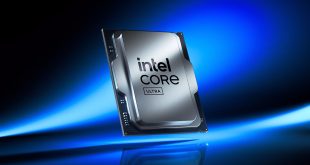Kabini
Kabini forms AMDs mainstream APU platform. Split between the quad-core A-series and dual-core E-series APUs, Kabini looks to offer users and OEMs a product that is good for all-round usage.
Designed for use with small screen and entry-level notebooks, AMD's Kabini APUs aim to compete with Intel's Core i3, Pentium and Celeron mobile parts.
Four Jaguar cores and 2MB of L2 cache will be present on the A6-5200 and A4-5000 APUs. The E-series chips will feature half the cache and cores. Platform support includes 10 USB ports, 2 of which can be USB 3, 2 SATA ports and one x4 PCIe 2.0 link for discrete GPUs.
The main differences between the two parts are the A6's HD 8400 GPU versus the A4's HD 8330, and the 500MHz CPU clock speed increase for the 5200. The A6 also increases power consumption from the A4's 15W up to 25W.
The entry-level E-series chips slash the L2 cache size and number of cores in half. Slower-clocked Radeon HD 8200 series GPUs are also used to reduce costs. The E-series chips' CPU frequencies range from 1.0 to 1.65GHz.
All of the Kabini APUs support memory of DDR3-1333MHz speed or greater.
AMD claims a greater than 100% performance per watt boost over the previous generation, in certain scenarios. It also claims that the Kabini APUs will be up to 25% more power efficient than their predecessors, resulting in battery lives of up to 11 hours.
 KitGuru KitGuru.net – Tech News | Hardware News | Hardware Reviews | IOS | Mobile | Gaming | Graphics Cards
KitGuru KitGuru.net – Tech News | Hardware News | Hardware Reviews | IOS | Mobile | Gaming | Graphics Cards






Finally, AMD has got it almost right in their product lines. Hitting the mid to low ends of the market is where the volume is (it is declining now due to lack of products in this space). Getting a range of products from cheaper ultrabooks at the $400-$600 price range is important. The current $650 and up prices are way to high for the cash strapped market to bear. On the low end side, a good Win8 tablet around $350 mark will make a reasonable student computer/laptop hybrid.
While Intel keep pushing the high end, the mid and low ends were suffering and AMD could not really address them before. Now a complete range of chips exist to fulfill that market. With aggressive pricing from AMD, they might be able to jazz that market back to the volumes prior to Windows 8.